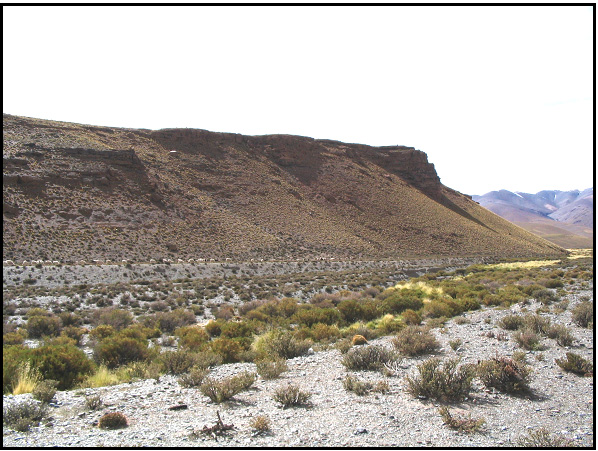Taron Group

TARON OUTCROP PHOTO, FACING SOUTH EAST
THE DEPOSIT,OF WHICH THIS OUTCROP IS ONLY A FRACTION, HAS A RELIEF OF 70 METRES. THE WHITE SPOTS SEEN AT THE MID-LATITUDE ARE GRAZING SHEEP FOR SCALE.
The Taron Group, containing a deposit enriched in cesium and rubidium, is located 160 km northwest of the city of Salta, Argentina, at the boundary between the Eastern Cordilleran Ranges and the Altiplano-Puna. Other elements of potential interest are thallium, arsenic, and manganese; during the Second World War, and later in the 1950s, small scale manganese mining took place on the properties.
The deposit is hosted in the Ochaqui Basin, a graben-like structure filled with Late Tertiary sedimentary and volcanic rocks. An epithermal event of Miocene age metasomatized these pre-existing rocks, forming assemblages of geyserites and travertine within the porous sediment. These assemblages comprise of the sediment-hosted epithermal deposit containing enriched values of cesium and rubidium. A Petrographic, XRD, SEM study concluded that cesium, substituted into pharmacosiderite, exists at levels of up to 12% Cs in the main zone of mineralization.
Cascadero completed 5600 meters of hand and mechanized drilling on the property between 2005 and 2006. In 2009, exploration continued with 7 HQ diamond drill holes totaling 907 meters. Cascadero completed a 35-hole diamond drilling campaign in 2017. The 2017 drill results yielded an average Cs grade of 1400 ppm. Work performed jointly with UBC demonstrated that potentially saleable products, Cs hydroxide and Cs Formate solutions, can be extracted from the mineralized material.
